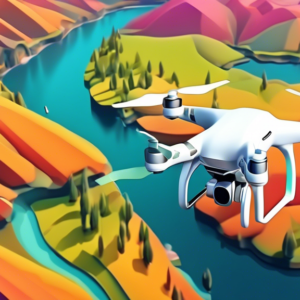Finding the Perfect Launchpad
The thrill of piloting a drone and capturing breathtaking aerial footage is unparalleled. However, before you take to the skies, it’s crucial to identify safe and legal flying zones for your drone adventures. With regulations varying across regions, pinpointing the ideal location can be a challenge. Fret not, aspiring drone pilots, for we’re here to guide you on your quest for the perfect launchpad!
1. Embrace the Great Outdoors: Parks and Recreation Areas
Local parks and recreational areas often provide ample space for drone flight, making them a popular choice among enthusiasts. However, it’s essential to check local ordinances and park regulations beforehand, as some may have restrictions or designated flying zones. Researching online or contacting park authorities can save you from unexpected hassles.
2. Unleash Your Drone in Open Fields and Farmlands
Vast open fields and farmlands offer unobstructed airspace and stunning panoramic views, perfect for capturing breathtaking drone footage. If you’re considering these locations, seek permission from landowners to ensure a smooth and respectful flying experience. Respecting private property is paramount to maintaining positive relationships within the community.
3. Explore the Wilderness: National Forests and BLM Lands
For the adventurous drone pilot, national forests and BLM (Bureau of Land Management) lands present a treasure trove of scenic landscapes. These expansive areas typically allow drone flight, but it’s crucial to adhere to any specific guidelines or restrictions set forth by the managing agencies. Responsible flying ensures the preservation of these natural wonders.
4. Soar Above the Shoreline: Beaches and Coastal Areas
The allure of capturing coastal beauty from a bird’s-eye view is undeniable. Beaches and coastal areas can offer fantastic drone flying opportunities, but be mindful of local regulations and potential restrictions due to wildlife protection or nesting areas. Additionally, strong winds and interference from seagulls are factors to consider when planning your coastal drone adventure.
5. Seek Specialized Flying Sites: Drone Parks and Clubs
Dedicated drone parks and clubs are popping up across the country, providing safe and controlled environments for enthusiasts to hone their skills. These venues often feature obstacle courses, landing pads, and a community of passionate drone pilots eager to share their knowledge and experiences. Joining a local club can open doors to a world of camaraderie and learning.
6. Elevate Your Urban Exploration: City Parks and Designated Zones
While urban areas present more challenges for drone flight due to population density and potential hazards, some cities have designated zones or parks where drone flying is permitted. Researching local regulations and identifying these designated areas is essential for a safe and enjoyable urban drone experience.
7. Respecting Privacy and Safety
Regardless of your chosen location, prioritizing safety and respecting privacy are paramount. Always maintain a safe distance from people, buildings, and other aircraft. Avoid flying over private property without permission, and be mindful of noise levels to minimize disturbance. Responsible drone operation ensures a positive experience for everyone.
Navigating the Regulatory Landscape
Drone regulations can vary significantly depending on your location. The Federal Aviation Administration (FAA) governs drone flight in the United States, while other countries have their own aviation authorities and guidelines. Familiarizing yourself with the specific rules and requirements in your area is essential to avoid potential fines or legal issues.
Essential Resources for Drone Pilots
Several online resources can assist you in finding suitable drone flying locations and understanding local regulations. The FAA’s B4UFLY app provides real-time information on airspace restrictions and advisories, while websites like AirMap offer interactive maps displaying no-fly zones and other relevant data. Additionally, local drone clubs and online communities can provide valuable insights and support.
